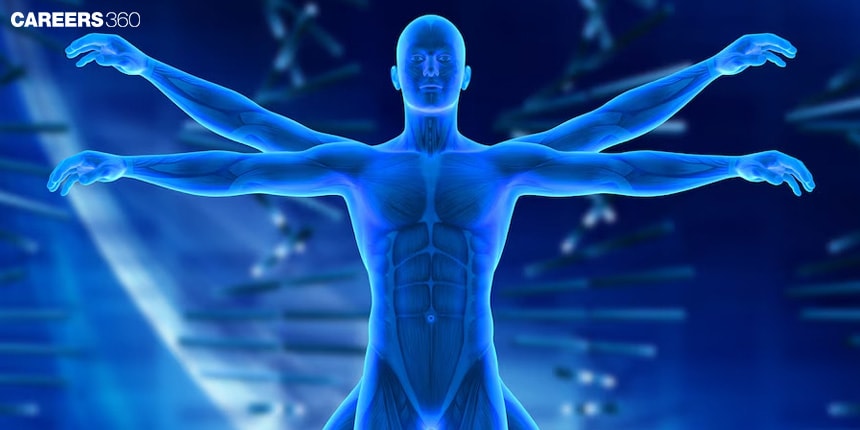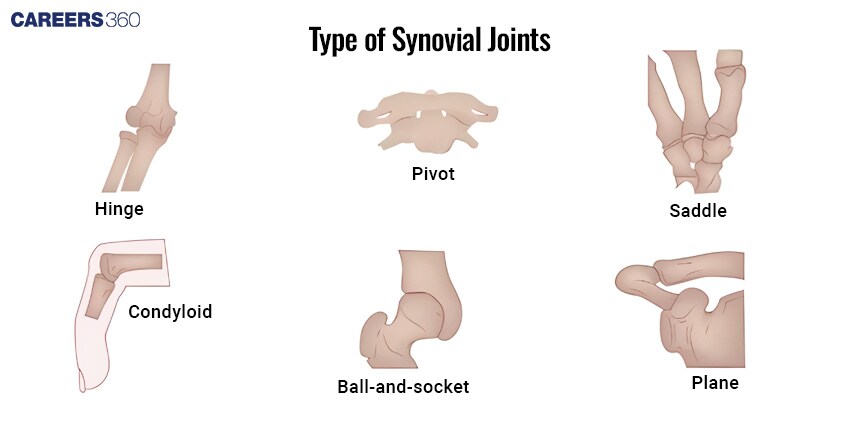Types Of Movement In Human Body: Meaning: Concepts, Types
The Human Body and its Movement explain how humans can move. This topic is from the chapter Locomotion and Movement of class 11 in Biology. It describes how the muscles, bones, and joints act together for a walk, run, and bend. This article is helpful for exams such as NEET and AIIMS BSc Nursing since it is the basic concept of how organisms move about and interact with their environment.
NEET 2025: Mock Test Series | Syllabus | High Scoring Topics | PYQs
NEET Important PYQ's Subject wise: Physics | Chemistry | Biology
New: Meet Careers360 B.Tech/NEET Experts in your City | Book your Seat now
- Why is Movement Necessary?
- Human Body and Its Movement
- Different Types of Joints
- Disorders Affecting Movement
- Recommended Video on the Human Body and Its Movement

Why is Movement Necessary?
Movement is an essential property of all living organisms; it enables survival, interaction, and functioning. Biologically, movement can be described as the process whereby any part of the body, or the whole body, changes position, influenced by powerful muscle contractions through the action of the nervous system.
Human Body and Its Movement
The human body is amazing and can move in so many ways. So here are some key points about how our body moves:
- Muscles pull on our bones and make us move. They help us move our arms and legs, too, by contracting in pairs.
- Bones give our body shape. Joints are simply where bones meet. Joints such as knees and elbows help us bend and twist.
- Our brain sends messages through nerves to control our muscles. This helps in moving smoothly and quickly.
- Our body can know its space location. This allows us to balance and be aware of our arms and legs even though our eyes are closed.
- This energy to move around is derived from the food we take in, which our body uses to make the muscles function and to keep them active for playing and working.
Also Read:
- Types of Movement in the Human Body
- Locomotion and Movement
- Human Skeletal System
- Neural Control and Coordination
Different Types of Joints
Joints are joining points for bones that form articulations moving in different ways styled by their construction and situating
Ball and Socket Joint
It allows rotational movement to occur in the shoulder and hip joints.
Hinge Joint
Allows the movement involving one plane, under the elbow and knee joints.
Pivot Joint
Allows rotational movement around a single axis. The atlantoaxial joint that occurs in the neck.
Gliding Joint
Allows bones to slide past one another, found in wrist and ankle joints.
Saddle Joint
Allows for angular movements similar to a hinge, but with more extremes; found in the thumb joint (carpometacarpal joint).
Diagram: Types Of Joints

Disorders Affecting Movement
Many types of disorders can affect movement, thus decreasing quality of life.
Parkinson's Disease: The Brain cannot adequately control movement.
Arthritis: Inflammation of joints, causing pain and stiffness.
Muscle Dystrophy: A group of diseases causing progressive muscle weakness.
Also Read:
| Ribs and Rib Cage | Vertebral Column |
| List of 206 Bones in Body | Pectoral Girdle |
| Axial Skeleton System | Appendicular Skeleton System |
Recommended Video on the Human Body and Its Movement
Frequently Asked Questions (FAQs)
Skeletal, smooth and cardiac muscle movements are expressed in the human body, each significant for variable functions and integrated by the nervous system.
Flexion decreases the angle between two body parts, such as bending the elbow, while extension increases it, straightening the arm.
The nervous system coordinates movement by sending signals from the brain to muscles via nerves to raise precise and coordinated actions.
Movement disorders include Parkinson's disease, arthritis, and muscular dystrophy. All of these diseases are related to different aspects of muscular and joint functionality.
Ball and socket, hinge, pivot, gliding, and saddle joints provide connections between bones and give way to a variety of movements, thereby offering mobility and flexibility.
Also Read
30 Nov'24 06:17 PM
28 Nov'24 05:27 PM
28 Nov'24 04:14 PM
28 Nov'24 03:07 PM
28 Nov'24 03:06 PM
28 Nov'24 01:21 PM
28 Nov'24 12:16 PM